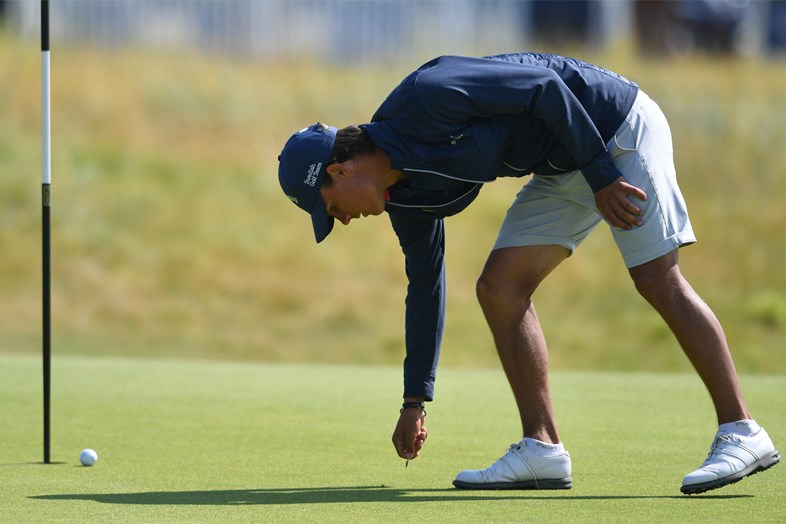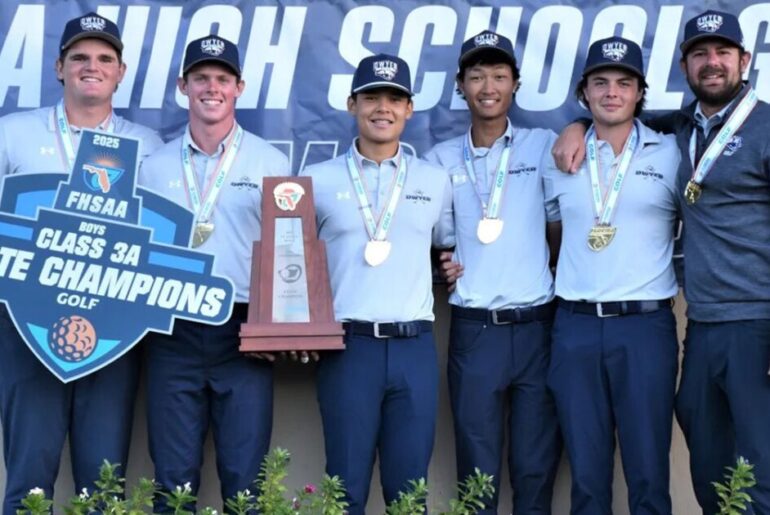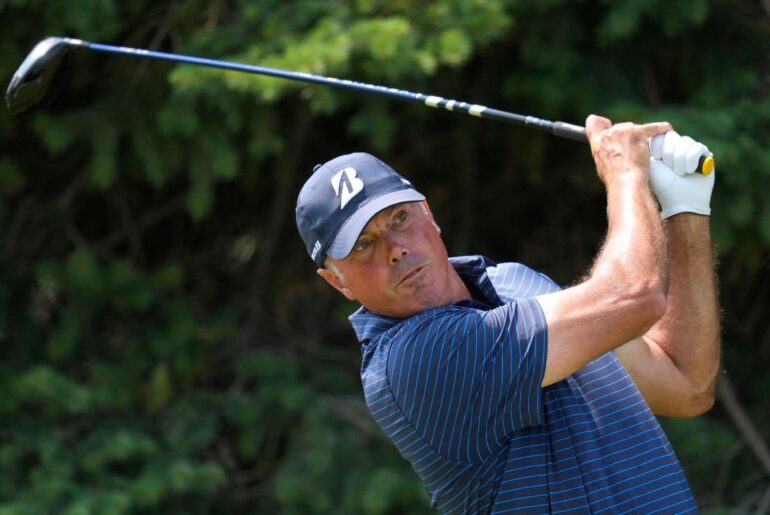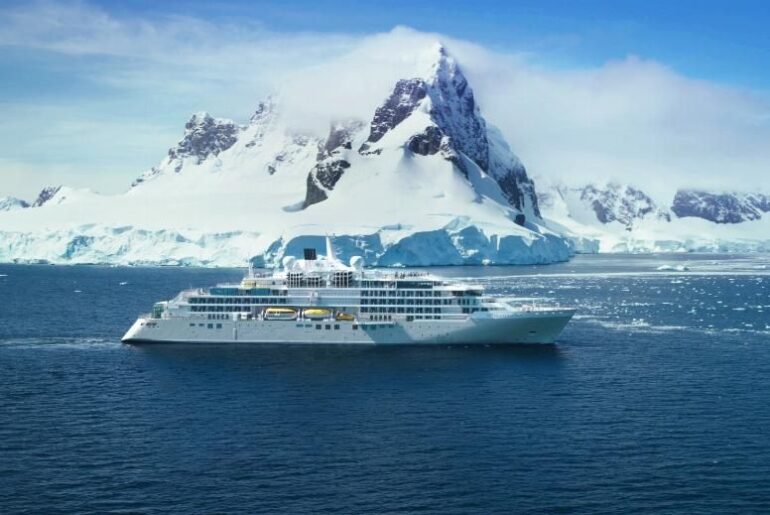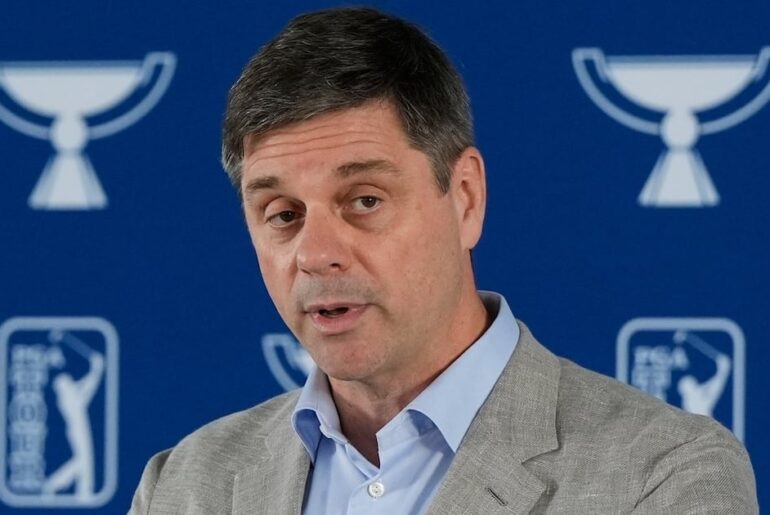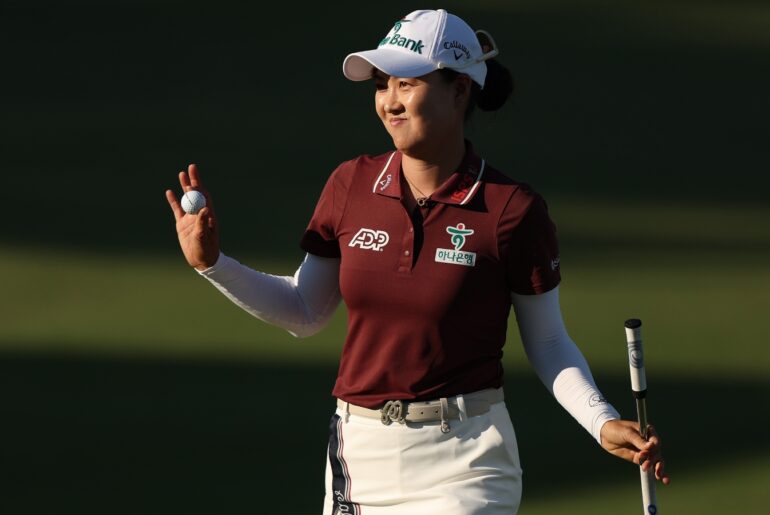Tour-level spin doesn’t have to be expensive. Three cheap golf balls matched the spin and stopping power of the game’s most expensive models in our robot test.
Most golfers assume you need to buy a premium golf ball like a Titleist Pro V1, TaylorMade TP5, or Callaway Chrome Tour if you want real bite on your approach shots. But when we tested 62 different golf balls on a $100,000 robot, a few cheaper models punched well above their weight.
These balls weren’t just “good for the price” – they were genuinely excellent on partial wedges and full-shot iron approaches.
In fact, three cheap golf balls offered tour-level control on both 7-iron approaches and 40-yard wedge shots. These balls weren’t just “good for the price” – their performance on partial wedges and full-shot iron approaches was genuinely excellent.
Why these three golf balls made the cut
Our judgment came down to two key elements from our biggest-ever golf ball test:
1. Wedge spin similar to tour balls
In our test, most premium balls sat between 5,800-6,300 rpm of spin on a 40-yard wedge shot. To count as “tour-like”, a value ball needed to sit right in that window.
2. 7-iron spin + descent that looks like a tour ball
The tour balls tested delivered 4,700-5,200 rpm of spin with a 7-iron, combined with a descent angle of 45° or more. That combination is key for control, giving you approach shots that stop quickly enough to hold greens and attack pins.
Balls with noticeably lower spin rates or flatter descent angles were disregarded.
After applying those filters, only three value balls truly held their own.
Titleist Tour Soft
The Titleist Tour Soft ranked sixth of all 62 balls for wedge spin, placing it above premium balls like the TaylorMade TP5x, Callaway Chrome Tour, Maxfli Tour X, and the Wilson Staff Model. It span more than any other Titleist golf ball.
Of the 14 highest-spinning balls on wedge shots, the other 13 were all three-, four-, and five-piece premium models – the Tour Soft was the only outlier.
With a 7-iron, it produced 4,774 rpm of spin (ranked 14th of 62) and a 45.2° descent angle – bang on the tour-ball blueprint.
MetricResult40y wedge spin6,075 rpm (6th of 62)7-iron spin4,774 rpm (14th of 62)7-iron descent angle45.2° (T7 of 62)
The Tour Soft delivers tour-level spin at half the price of a tour-level golf ball.
The flight, height, and descent all look behave exactly like a premium model. If you care about spin and control but don’t want to pay premium prices, this is the obvious choice.
Titleist’s highest-spinning golf ball.
Best two-piece golf ball for greenside spin

Rrp: £34.00
Price: £32.21
The Tour Soft performed superbly in short game performance, as the only two-piece golf ball to generate over 6,000rpm (6,075 – sixth overall and the highest-spinning Titleist model).
Moving to approach play, this golf ball is the bronze medal winner in this area. Tour Soft produces the second-highest spin (4,774rpm) and second-steepest descent angle (45.2), but it is the shortest two-piece golf ball (154.2yds).
Off-the-tee performance has this golf ball very closely matched with Titleist’s distance two-piece golf ball – the Velocity. Granted, Tour Soft is slightly shorter and slower at all three swing speeds. However, giving up less than a yard off the tee at every swing speed is probably worth it for the approach play and short game performance gains. It performed well enough at 114mph to earn the silver medal for tee-to-green performance.
Tour Soft is a super consistent golf ball in every area. If you’re looking for a two-piece golf ball that’ll do everything, this golf ball needs to be on your mind.
On-course verdict
This is one of the best-feeling golf balls I’ve had the pleasure of playing with purely because of how soft it is. I’m not always a fan of soft golf balls, but when they feel as good as the Tour Soft does, there’s nothing to dislike.
The feedback and response throughout the bag is exactly what you want with a soft golf ball, but it’s most enjoyable when playing around the greens because you can really feel the ball interacting with the grooves.
Around the greens, this ball generates amazing spin and control that’s capable of challenging the best high-spin golf balls.
Moving away from the green, I didn’t notice anything special about the Tour Soft’s performance, but in the same breath, there’s nothing to criticize. If anything, this ball performs better than you would expect from a two-piece model.
The Titleist Tour Soft is great value, and if you want a soft-feeling golf ball, this is the model you want.
Pros & Cons Specs Features
Pros Amazing short-game spin and controlIncredibly soft and responsiveGreat value Cons Short distance in iron play Carry distance (yds) Driver 114mph – 271.3 | Driver 93mph – 208.5 | Driver 78mph – 160.4 | 7-iron – 154.2 Ball speed (mph) Driver 114mph – 163.3 | Driver 93mph – 133.4 | Driver 78mph – 112.8 | 7-iron – 108.3 Backspin (rpm) Driver 114mph – 2,776 | Driver 93mph – 2,731 | Driver 78mph – 2,438 | 7-iron – 4,774 | Pitch – 6,075 Launch angle (°) Driver 114mph – 11.1 | Driver 93mph – 13 | Driver 78mph – 14 | 7-iron – 21.1 | Pitch – 30.4 Descent angle (°) Driver 114mph – 37.6 | Driver 93mph – 32.8 | Driver 78mph – 27.3 | 7-iron – 45.2 | Pitch – 35.7 Peak height (yds) Driver 114mph – 32.6 | Driver 93mph – 22.8 | Driver 78mph – 15.4 | 7-iron – 29.5 | Pitch – 6.8 Compression (psi) 95 Large, faster coreReformulated thin fusablend coverProprietary quadrilateral dipyramid dimple design346 dimples2-Piece constructionAvailable in white, green, and yellowAn alternative model is AIM 360 Kirkland Signature V3.0
The Kirkland Signature V3.0 ranked seventh of all 62 balls for wedge spin, just behind the Tour Soft.
Its iron spin of 4,861 rpm was seventh of 62 and even better than the Tour Soft, while the descent angle of 45° put it right in that tour-level stopping window.
MetricResult40y wedge spin6,050 rpm (7th of 62)7-iron spin4,861 rpm (7th of 62)7-iron descent angle45.0° (T20 of 62)
The Kirkland Signature has become something of a cult favorite golf ball in recent years, and it’s easy to see why. It’s one of the cheapest golf balls on the market, yet it produces spin rates that compete with anything you care to pit it against.
Incredible performance for a bargain price.
Best three-piece high-spin value golf ball
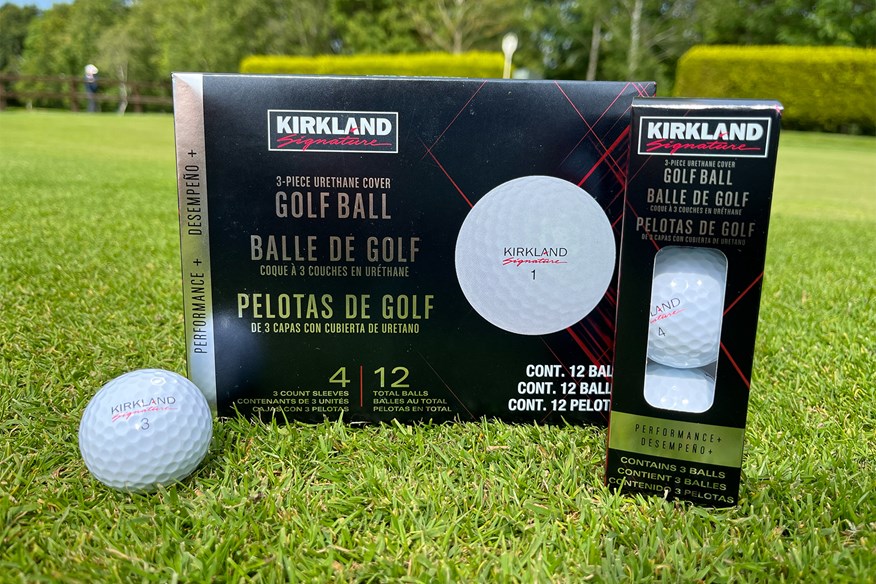
Robot test verdict
Kirkland golf balls are known for being high-spinning. The V2.0 was, and so is the V3.0. It means the Signature V3.0 is amazing around the greens.
The Signature V3.0 generated 6,050 rpm of spin on the 40-yard wedge shot. Of all 62 golf balls tested, it’s the seventh highest-spinning golf ball.
Spin persists throughout the bag, and with the 7-iron shot, the Signature V3.0 is once again the highest-spinning three-piece club golfer model (4,861rpm). It also lands with the steepest descent angle (45°).
You might think the high-spinning nature will hurt how the V3.0 performs off the tee, but is that the case? Definitely not. The V3.0 is the bronze medal winner for off-the-tee performance.
It does generate a lot of spin, but it’s also long and fast at all three swing speeds. At the fastest swing speed, it’s the third-longest (271yds) and fastest (163.5mph). At the moderate swing speed, it’s the third-longest (208yds) and fastest (133.6mph). And at the slower swing speed, it’s the third-longest and fourth-fastest (112.8mph).
With the Kirkland Signature V3.0, you are signing yourself up to play with a high-spin golf ball, but if you need spin, it’s one of the best models you can play with.
On-course verdict
Over the years, these golf balls have been highly regarded by many golfers and heavily scrutinized by others. Kirkland’s Signature three-piece golf balls are known for delivering high spin, and this is no different with their V3.0, as it ranks among the best high-spin golf balls.
When I took this ball out on the course, I couldn’t criticize its distance in the long game, but then again, high-spin golf balls suit my game.
I’m a big believer that for the majority of golfers, spin is your friend. You’re guaranteed a golf ball that easily generates spin by playing with the V3.0. Therefore, I believe that more golfers would benefit from playing with this golf ball than not playing with this golf ball.
I’m not normally a fan of soft-feeling golf balls, but I must say that the V3.0 feels good off the club face. I wouldn’t say that the response from this golf ball is particularly strong throughout the bag, but around the greens, there is a pleasant sensation when you clip the ball cleanly – something I think most golfers appreciate.
I think the Kirkland Signature V3.0 is a very strong golf ball. I would never expect to see it played on Tour, but for amateur golfers, it’s definitely one to consider. If you struggle to generate spin or if you just enjoy having a high-spinning golf ball, then it’s a fantastic option.
Read our full Kirkland Signature V3.0 golf ball review.
Pros & Cons Specs Features
Pros Amazing price per ball considering the qualityCombines soft feel, long distance, and high spinImpressive consistent ball flight Cons Don’t expect optimal carry distance Carry distance (yds) Driver 114mph – 271 | Driver 93mph – 208 | Driver 78mph – 160.5 | 7-iron – 154.3 Ball speed (mph) Driver 114mph – 163.5 | Driver 93mph – 133.6 | Driver 78mph – 112.8 | 7-iron – 108.6 Backspin (rpm) Driver 114mph – 2,873 | Driver 93mph – 2,734 | Driver 78mph – 2,572 | 7-iron – 4,861 | Pitch – 6,050 Launch angle (°) Driver 114mph – 11.1 | Driver 93mph – 12.7 | Driver 78mph – 13.9 | 7-iron – 20.7 | Pitch – 30 Descent angle (°) Driver 114mph – 38.3 | Driver 93mph – 32.3 | Driver 78mph – 27.7 | 7-iron – 45 | Pitch – 35.1 Peak height (yds) Driver 114mph – 33.2 | Driver 93mph – 22.3 | Driver 78mph – 15.6 | 7-iron – 29.1 | Pitch – 6.5 Compression (psi) 107 Increased core sizeMantle with new proprietary coverProprietary TPU with improved scuff resistance and impact enduranceModified dimple depth for optimized flight height338 dimples3-Piece constructionAvailable in white only Mizuno RB 566
Whilst the Kirkland Signature has had plenty of attention in recent years and the Titleist Tour Soft comes from the biggest golf ball brand in the game, the Mizuno RB 566 is something of a sleeper pick.
I don’t think I’ve ever met anyone using it, yet it delivers fantastic spin for a bargain price.
Its 7-iron spin rate of 4,947 rpm was the fourth-highest in the entire test – beating numerous golf balls that cost more than twice as much. Its 45.3° descent angle was also the joint-highest in the test.
A wedge spin rate of 5,960 rpm saw it rank a respectable 17th – higher than the Titleist Pro V1 and Pro V1x, Srixon Z-Star and Z-Star XV, and the PXG Tour.
MetricResult40y wedge spin5,960 rpm (17th of 62)7-iron spin4,947 rpm (4th of 62)7-iron descent angle45.3° (T1 of 62)
This is a seriously underrated ball. If you want high iron spin and a steep, tour-style descent on full shots – without paying a premium – it’s a fantastic option.
Fantastic iron control and strong wedge spin.
Best Mizuno golf ball for short-game performance

The Mizuno RB 566 is a unique golf ball due to its 566 dimples – more than any other model. This makes it the golf ball with the most dimples. Does that make this golf ball perform differently?
Probably not. However, it is the bronze medal winner for short game performance (5,960rpm). Although the dimple technology isn’t specifically designed to generate spin, the RB 566 is the fourth highest-spinning golf ball in approach play (4,947 rpm), and it lands with the joint-steepest descent angle (45.3°).
I’d recommend the RB 566 for anyone looking for a high-spin golf ball.
On-course verdict
There’s something very exciting about a unique golf ball, and so that’s exactly how I felt when testing the Mizuno RB 566 with its 566 dimples.
I didn’t really know what to expect from this golf ball, but I definitely wasn’t expecting it to spin as much as it did. I had a lot of enjoyment playing with the RB 566 because I was able to throw the ball at the pin and watch it stop.
Pros & Cons Specs Features
Pros Great short-game spin and controlGood valueSolid performance from tee to green Cons Struggled to reduce spin off the tee on the course Carry distance (yds) Driver 114mph – 268.6 | Driver 93mph – 207.9 | Driver 78mph – 160.2 | 7-iron – 154.8 Ball speed (mph) Driver 114mph – 161.9 | Driver 93mph – 133.3 | Driver 78mph – 112.6 | 7-iron – 109.1 Backspin (rpm) Driver 114mph – 2,719 | Driver 93mph – 2,553 | Driver 78mph – 2,381 | 7-iron – 4,947 | Pitch – 5,960 Launch angle (°) Driver 114mph – 11.1 | Driver 93mph – 13 | Driver 78mph – 14.1 | 7-iron – 20.7 | Pitch – 30.6 Descent angle (°) Driver 114mph – 36.9 | Driver 93mph – 31.6 | Driver 78mph – 27.2 | 7-iron – 45.3 | Pitch – 36 Peak height (yds) Driver 114mph – 31.5 | Driver 93mph – 21.9 | Driver 78mph – 15.4 | 7-iron – 29.6 | Pitch – 7 Compression (psi) 92 Large soft compression coreMicro dimple designIonomer cover566 dimples2-Piece constructionAvailable in white, yellow, and orange Side-by-side comparison
Here’s how the three highlighted value balls stack up against each other – and against the benchmark of tour balls:
Ball40y wedge spin7-iron spin7-iron descent angleTitleist Tour Soft6,0754,77445.2°Kirkland Signature V3.06,0504,86145.0°Mizuno RB 5665,9604,94745.3°Tour ball range6,000–6,3504,700–5,25045°–45.3°
All three value balls sit squarely inside the tour-ball performance range for wedge and iron control.
Why only three made it
I’ve only showcased three value balls here because only three fully deserved it.
Plenty of cheaper balls had one good number (often wedge spin), but then dropped too much iron spin or landed with too shallow a descent angle. Others delivered a good 7-iron descent but didn’t get anywhere near 6,000 rpm on a 40-yard pitch.
Balls like Vice Tour, Callaway Warbird+, and the Srixon AD333 came close, but a dip in 7-iron spin kept them just outside the true tour-like window.
These three didn’t compromise – they performed like premium balls on the shots where scores are made and lost.

